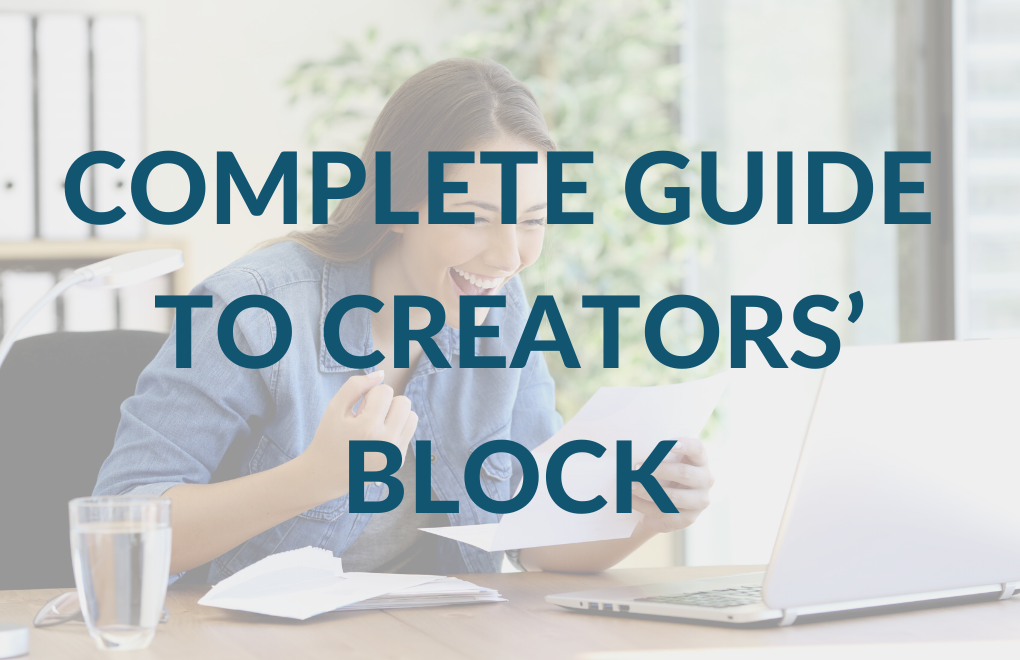Wave goodbye to writer’s block with these 12 tips that can be used before, during and after a creative project.
We all suffer from a creative block sometimes.
Whether you’re a professional or a beginner, you must know the feeling. No good ideas come up, the words don’t flow to paper or the video script sounds wrong.
While there is no way to get rid of the block completely, here are twelve ways to limit the damage and get back on a creative flow as soon as possible. Pick a few to try before, during and after a creative working session to find the ones that work best for you.
Battle a Creative Block: Before Getting to Work
- Cocoon yourself from interruptions
A lot can be done to fight against a creative block before even getting to work. Make sure you won’t be interrupted – or you won’t interrupt yourself – by eliminating digital disturbances such as notifications, calls and emails.
- Create a creative routine
A repetitive routine around the focused creative task tells your mind it’s time to focus on content things. This can be a content creation day every two or four weeks that always starts a certain way, or for example a meditation routine or a run to kick off the writing day.
- Make a free flow writing exercise
Especially writers benefit from this one, but this can also be useful for speakers. The principle of a free flow writing exercise is simple: set a timer to 5-10 minutes and during that time, write down everything that comes to mind. The text isn’t meant for publishing but it will make a creative flow easier and get you over that terrifying “I don’t have anything on paper” feeling before you even get there.
- Schedule a separate brainstorming session
I want to share a secret: even us professional writers don’t just sit down and start writing. Content creation becomes almost effortless with a bucketful of fresh ideas. That’s why it’s a good idea to schedule a separate brainstorming session before the actual content creation time.
Battle a Creative Block: When You’re Working
- Print out notes and highlight the main points
If you have material to work on, print it out and use an old-fashioned highlighter or do the same on your laptop. This helps you process the material and organize your thoughts before getting to work.
- Create a structure first
To take the processing to the next level and create a structure for your content before starting to write or record. When the words get stuck, refer back to the structure.
- Cheat yourself to get started
Grab the timer and cheat yourself to get started. Set the time to 15 minutes and commit to work until the timer goes off. Very likely the work starts to roll, and even if not, you have done some work that you can continue on later.
- Start from anywhere but the beginning
You don’t need to start with the notoriously difficult first lines. Start with the part that seems the clearest to you and reorganise the bits and pieces later.
- Make a “two-inch frame” exercise
Writer Anne Lamott recommends a writing exercise she calls a “Two-Inch Frame” exercise. She recommends taking a small photo frame, looking at what can be seen through it and writing about those things. The exercise can also be executed metaphorically by choosing just a small piece of the whole topic and focusing on that.
Battle a Creative Block: When Getting Stuck
- Go for a walk with a recorder
Did you get stuck? Don’t ruminate about that, instead go for a walk. Remember to take your smartphone or another recorder with you so you can note down your thoughts which will very likely start to flow again after a while.
- Do research
If the creation doesn’t work, focus on doing research for a while. Go back to your notes or explore the topic online. Background info can spice your content up with fresh and interesting facts or new metaphors.
- Try Pomodoro Technique
The Pomodoro Technique works for content creators, too. Use our old friend the timer again and set it to 25 minutes. After an intensive work period, force yourself to take a 5-minute break to replenish your creative energy reserve. Test different combinations: some like to work for 40 or 50 minutes and take a 10-minute break. When your attention starts to wander, it’s a sign for a break.
More ideas for your next content session
As you can see, very few of these techniques actually revolve around writing but are done after or before! Pick one and try the next, if the first one doesn’t work.
For more content ideas, download the content idea guide below! It makes brainstorming and planning really easy, and the next time you can dive straight into the creative part.







Recent Comments